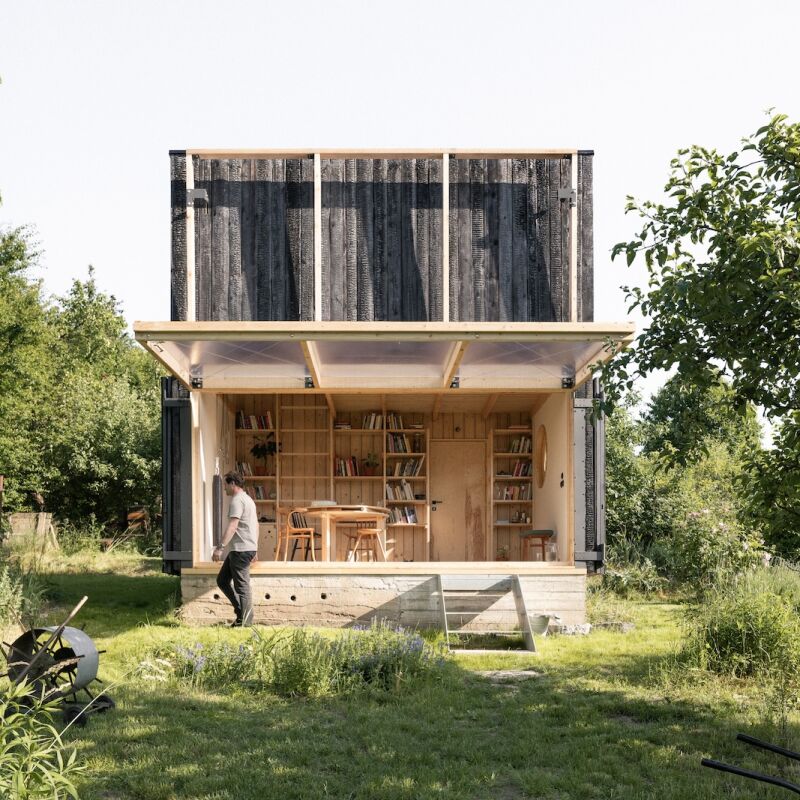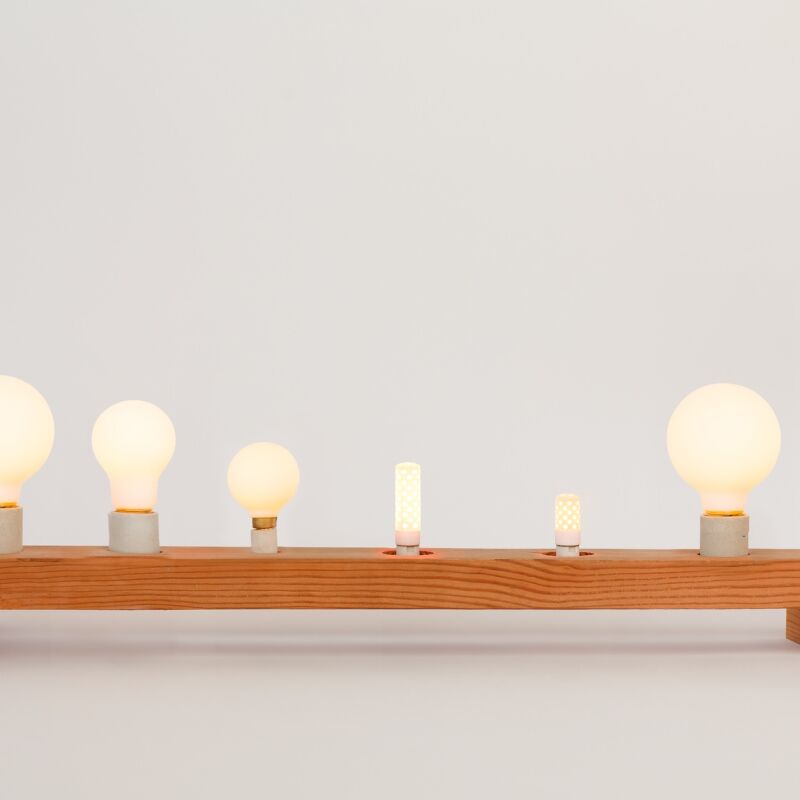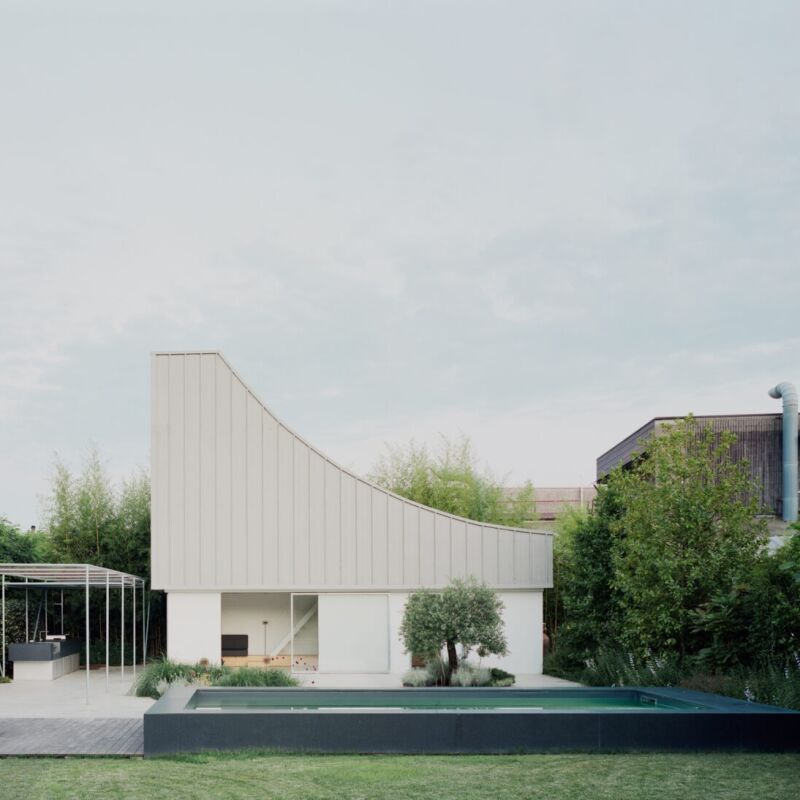To chill or not to chill? In our latest book, Remodelista: The Low-Impact Home, we recommend downsizing your fridge—appliances scaled like SUVS are energy hogs—and filling it only with what truly needs to be kept cold, such as meat, fish, and dairy.
Since 2008, artist-designers Jihyun Ryou and David Artuffo of Jihyun David studio have been developing eye-opening ideas for the many everyday staples they say don’t need to go in the fridge, lots of produce included. The couple met at the Design Academy Eindhoven in the Netherlands—she grew up in Korea; he’s from Italy; they currently live in Turin, Amsterdam, and Seoul—and they call their ongoing collaborative series “Save Food From the Fridge.”
We first featured their work more than a decade ago and have been pondering it ever since. The problem as they see it: “We handed over the responsibility of taking care of food to technology, the refrigerator. We don’t observe food anymore, and we don’t understand how to treat it.”
Driven by a desire to cut down on waste, Jihyun David’s work is informed by research: In addition to studying food science, they’ve turned to farmers and grandparents for traditional wisdom on how perishables were preserved before the advent of the refrigerator. Here are a seven of their prototypes and key tips to contemplate for storing your own comestibles.
Photography courtesy of Jihyun David, Save Food From the Fridge (@savefoodfromthefridge).


1. Carrots and leaks are happiest standing up, the way they grow.
In refrigerator bins root vegetables are stowed in horizontal bunches, but, Jihyun says, “keeping them in a vertical position allows the organism to save energy and remain fresh for longer.” In response, she used sand, which enables them to be stored upright without touching each other, so rot isn’t spread. To “keep the humidity right,” a glass funnel is used to water the sand. The wooden shelves are maple with a beeswax finish.

2. Apples and potatoes work well together.
Apples emit a lot of ethylene gas, which, when stored with other fruits and vegetables, speeds up their ripening. But, notes Jihyun, “when combined with potatoes, apples prevent them from sprouting.” In response to this symbiosis, Jihyun David came up with a two-tiered option: a shelf with cut-outs for apples over a tilt-out bin for potatoes to be kept in the dark where they do best. “This way you keep you potatoes a bit longer while enjoying the beauty of the apple.”

3. Eggs taste better when they haven’t been in the fridge.
“An egg has millions of holes in its shell,” write Jihyun David. “It absorbs the odor and substance around itself very easily. This creates a bad taste if it’s kept in the fridge with other food ingredients. Our shelf provides a place for eggs outside of the fridge. Also the freshness of eggs can be tested in the water: The fresher they are, the further they sink.” This tip comes with a caveat: In the US, unlike many other countries, most eggs are sold refrigerated—and once refrigerated, they should be kept chilled because the temperature change can promote bacteria growth. But we can still give our eggs the water test.

4. Some fruit and veg thrive over a shallow bath.
“We tend to think of zucchini, eggplant, bell pepper, and cucumber as vegetables, but they are biologically fruits. This open shelf gives them a space to be outside the fridge. Also through the ritual of watering them everyday, they will stay fresh,” write Jihyun David. Produce that grows in warm places, tomatoes and bananas included, “gets injured” and loses nutrients and flavor when stored in the cold.

5. Spice benefits from rice.
The longstanding practice of pouring some uncooked rice into salt shakers also works for jars of spices: “Rice absorbs humidity easily,” notes Jihyun. “Adding rice to spice containers helps the spice stay dry without forming into lumps.” Since spices shouldn’t be exposed to sun or heat, Jihyun suggests “keeping the bigger quantity in a dark and cool space and a small quantity where it’s easy to use.”

6. A plinth with a water well keeps leafy vegetables fresh.
Noting that certain leafy vegetables, such as lettuce and cabbage, last longer when their stem or roots are in water, Jihyun David designed a hexagonal modular base of marble with a shallow water well. “Only the stem or root should touch the water, not much the leaves,” they note. “The temperature of marble helps keep the vegetables cool.” A cauliflower that they exhibited this way in Milan was still looking fresh 10 days after the show opened.

7. A tabletop celery bouquet is a good way to stay hydrated.
An idea from the designers’ blog: “Celery is one of the summer plants that quenches our thirst because 95 percent of celery is actually water.” The best way to keep the stalks fresh, they say, are to store them standing up: “Place the stalks in a vase with water like flowers. Just make sure not much is covered: Only the bottom of the celery should touch the water. Otherwise, it could get mushy. By having their beauty under our eyes, we will surely not forget to eat them.”

Watch Jihyun’s Ted Talk here. Interested in buying Jihyun David food storage designs? Shoot them a query at info@jihyundavid.com.
For more soulful kitchen inspiration, take a look at:
- Kitchen of the Week: Chef David Tanis’s Low-Tech, Economical, and Beautifully Soulful Kitchen in the East Village
- A Berkeley Kitchen Tour with Alice Waters and Fanny Singer
- Kitchen of the Week: The ‘Angry Food Blogger’ at Home in Hong Kong




Have a Question or Comment About This Post?
Join the conversation (1)